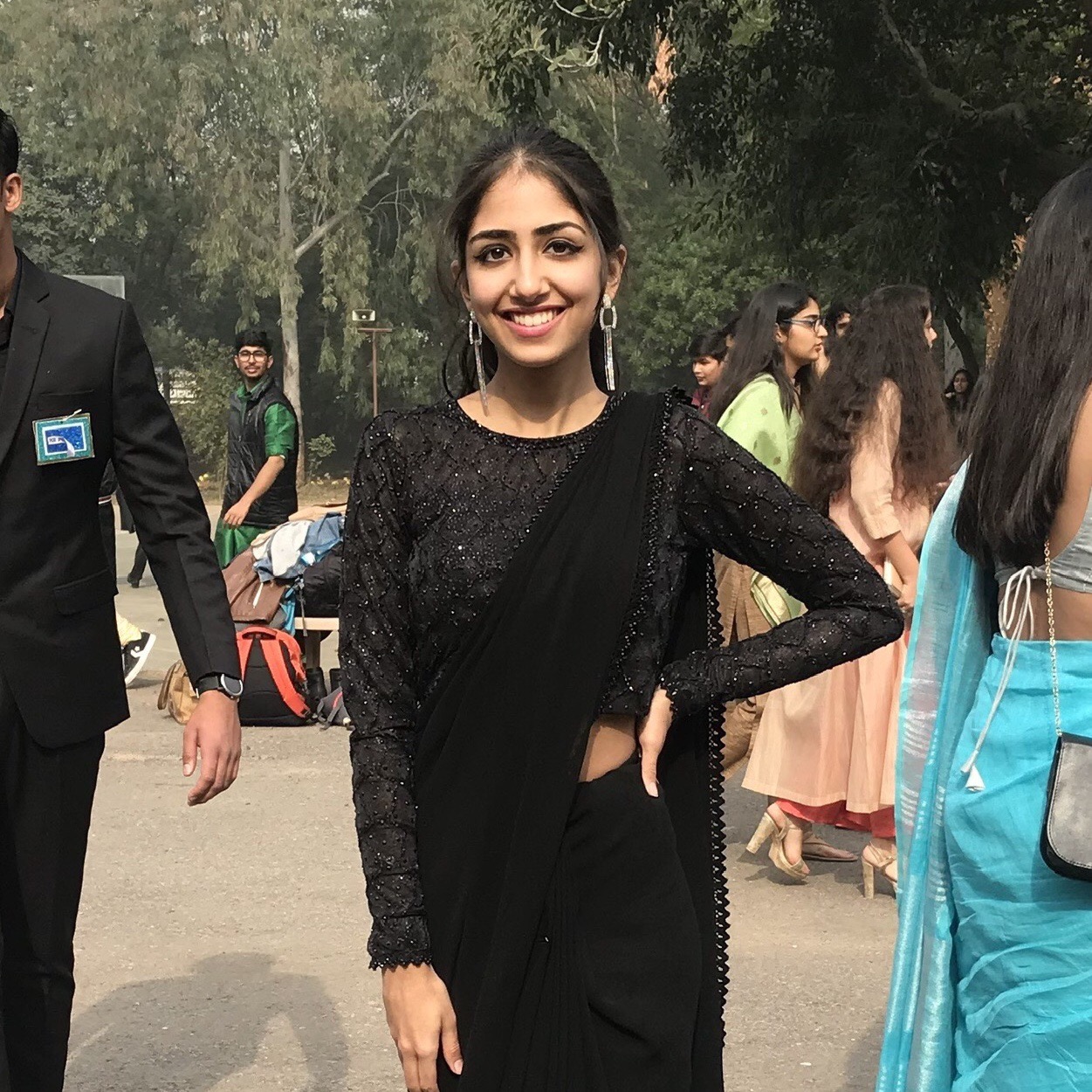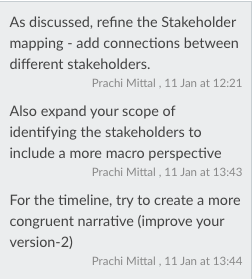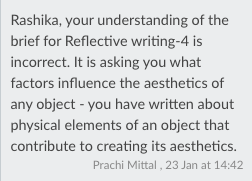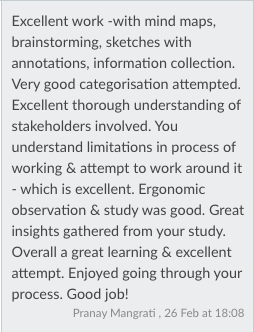Journey Of An Object
- Rashika Lungani

- Jan 3, 2021
- 12 min read
Updated: Mar 24, 2021
SELECTION OF THE OBJECT
We wanted to knock everyone’s socks off with our performance in this project, literally. That’s why me and my partner, Vrinda, decided to choose socks as our object. Socks are a very important element in our everyday wardrobe, yet they rarely cross my mind when planning or thinking about my outfits. I match my shoes, shirts, watches and belts but never my socks. Sometimes I would even wear two different socks when I am unable to find it’s other pair. I never lose even the most tiny items, then how can I be so careless about my socks? Especially when I wear them every single day. In winters I always have cold feet, which makes living without socks nearly impossible. There warmth and fuzziness makes me feel super cozy and comfy. Not only do they keep us warm in winters, For me socks have always been a saviour, particularly when it comes to wearing new shoes that might give me a shoe bite. Considering all this, we thought that this project would be a great way to understand and study the development, functionality, and evolution of this important yet relatively undermined piece of clothing.
DESCRIPTION OF THE OBJECT
Sock is a piece of cloth that is used to cover the feet. Usually made in an L shape
They were a part of both winter and summer wardrobe
socks consists of a cuff, heel flap, heel turn, gusset, foot, toe.
They come in many sizes, colour and pattern
winter socks are made with a combination of cotton and wool which makes them warm.
summer socks are made with cotton to absorb the sweat.
They help to avoid rotting and smelling of shoes.
They are soft to touch, even though there textural appearance makes them look rough.
they get worn out due to repeated washing. Particularly around the toe and the heel.
VARIATIONS OF THE OBJECT
I went around my house I found myself 5 different socks
my school knee length sock
socks that I borrowed from my grandmother which has a divot for slippers (called split toe socks, according to google) which for now I’ll refer to as “old people socks”
A random pair of above ankle socks (also known as short crew according to my google research) that I have owned since I was 7
Bright neon ankle length sock (not a pair since I only found one of them)
A plain pair of loafer socks

TASK 1
SELECTED OBJECT: SOCKS

DESCRIPTION OF THE OBJECT
Sock is a piece of cloth that is used to cover the feet. Usually made in an L shape
They are a part of both winter and summer wardrobe
socks consists of a cuff, heel flap, heel turn, gusset, foot, toe.
They come in many sizes, colour and pattern
winter socks are made with a combination of cotton and wool which makes them warm.
summer socks are made with cotton to absorb the sweat.
They help to avoid rotting and smelling of shoes.
they protect our feet from friction
They are soft to touch, even though there textural appearance makes them look rough.
they get worn out due to repeated washing. Particularly around the toe and the heel.
SLICE & DICE



IDENTIFYING AVAILABLE VARIETIES


MIRO LINK: https://miro.com/app/board/o9J_lZnn1As=/
ACTIVITY 2
STAKEHOLDER MAPPING
A) First attempt which consists of 2 different mind maps - REJECTED
THE STAKEHOLDERS

THE RELATIONS/EXCHANGE AMOUNG THEM

B) Second attempt - REJECTED

C) Final outcome

MIRO LINK: https://miro.com/app/board/o9J_lZnfmsY=/
ACTIVITY 3
FIRST TIMELINE




TIMELINE-2


MIRO LINK FOR BOTH THE TIME LINES: https://miro.com/app/board/o9J_lZpsrQA=/
CULMINATION
THE FUNNELLING PROCESS

LINK TO MIRO BOARD: https://miro.com/app/board/o9J_lZ8JTdw=/
MY FINAL INFERENCES

LINK TO MIRO BOARD: https://miro.com/app/board/o9J_lZ6VU9o=/
REFLECTION
2A. Design is a holistic concept that revolves around creating a design environment. Design is human centric. So it comes as no surprise that socio cultural phenomenon influence the design outcomes. Taking an example from my research about the sock, it was evident that the social distinction amongst the upper and lower class , and the desire of the upper cast to stand apart led to the development of expensive stockings made with expensive materials like silk. Design here was meant to feed the egos of the rich and nobles. With the change in time and the emergence of the middle class, there was now a need to to expand the market to those people who had the purchasing power to afford some form for luxury. This led to the development of cheaper socks made with materials like wool and nylon. The population boom and increased market demand also paved the way for mass production with machines. Design here, was meant to fulfil the needs of a new growing market, the middle class. A culture of plays and performances in Greece let to the development of special socks that were in cooperated in the costumes of the performers. Here design enhanced a pre-existing culture. The world Is designed, yet the world designs us And hence, We are stuck in a dynamic feedback loop between the societies and those who cater to there needs.

link to miro board: https://miro.com/app/board/o9J_lXkozVU=/
REFLECTION
2B. Sock is a very ordinary piece of clothing that often goes unnoticed. It’s surprising how two tiny pieces of fabric mean to be worn under our shoes can have a such a deep and enriching evolutionary history.
You never notice the connections between the design of an object and the world history, until you notice it.
I realised that history always revolves around the powerful - It seems quite obvious but it’s not. A major chunk of my research mainly yielded information about the desire of the rich to be separate from the rest. The desire of the nobility to have items and socks made with expensive and rare materials. It does not mean That poor people did not have socks, rather the fact that the ordinary concerns were not considered important enough to be recorded or documented. It was only after the 17th century that we start to see a glimpse about the rest of the society, a period where the middle class started to gain more political influence and became a sizeable social strata. Here I would like to narrate an incident that took place in the 1960’s. Alexander Cunningham the first director general of ASI (archeological survey of India) was one of the first archeologists to work on the sight of Indus Valley. He, during his survey found multiple artefacts, like stone statues and clay vessels. However when he found some regular utensils, he discarded them at the sight. He only focused on the grand finds. For a long time I used to think “what a stupid man would discard artefacts that could go in a museum” it was later that I realised ,that he associated those utensils with the ordinary folks, people about whom he was never interested to know about. Similarly the history of the Dalits in India for long has been ignored and it’s only now that the historical existence and importance of these marginalised groups are being recognised.
Technology both in the past and present, though meant to make the life of humans easier, ends up making it more complicated- we as a civilisation always glorify rapid development and technological advancements, so much so that are willing to ignore the boons that come along with it. We romanticise development and have a rosy tinted view of the view of the future. Sock, a simple item meant to protect us from cold was turned into a class symbol, so much so that in London there was a surveillance system put in place to make sure that the poor did not wear the socks of the Rich. Similarly we read about the greatness of the industrial revolution and the technological developments but rarely about the innumerable manual labour that was laid of due to the mechanisation of factories.
I am usually not the one to write long and lengthy reflections. However, upon these realisations I couldn’t help but think how the situation of the world still remains the same. We have learned history but we have not learnt from it.

PRE WORK FOR WEEK 2

MIRO BOARD LINK : https://miro.com/app/board/o9J_lZ8duSg=/
ACTIVITY 4
FORM STUDY THROUGH DRAWING



INSIGHTS
During this assignment I had some deeper understandings both about the object and humanity itself
Socks though small consists of many details. Initially I ignored the seams thinking that they all had the same stitching, however upon further inspection I realised how each seam has a different stitch depending upon the function. This revelation made me appreciate the skill of making socks way more than I did before.
It also made me question the restless pursuit of man to create a life full of comfort. Something for which he has been creating objects after objects.
I was also fascinated by the ability of humans to create “techniques”. While learning about the cuff made with stitching, I couldn’t help but wonder the amount of thought and complexity that went into the development of such a skill.
Since I socks was a relatively less detailed object as compared to the items choosen by others. I found myself looking for things. I forced myself to stretch the fabric and locate some small detail that can be highlighted. This yielded some very interesting results.
While doing a detailed drawing of the fabric, I was able to understand how the interlinking of thread creates elasticity and flexibility. The study of the threading pattern is something that will help me in my future projects as well.
Sock is one of the most undervalued garment worn by us. However this drawing assignment increased my appreciation for the design and thought behind this item of clothing. I also found myself thinking about ways to increase its usability . Now I find myself noticing this garment more. ( I also find myself judging people whenever they use the wrong kind of socks for the outfit)
ACTIVITY 5
POSTERS
HAND-DRAWN POSTER

DIGITAL POSTER WITH IMAGES

LINK TO MIRO: https://miro.com/app/board/o9J_lZfxkEc=/
AREAS OF CONTACT


ERGONOMIC STUDY THROUGH MAKING
MAKING
I knew that in order to understand socks I needed to go beyond just the garment itself. That’s why I first began by making a model of a foot. This model was made with aluminium foil and M-seal, towards the end my M-seal started to harden, that’s when I thought of using a hairdryer to heat it up in order to soften it. This helped in extending the work time of the M-seal. In order to understand the purpose of the design of the socks and it’s curves I wrapped a piece of fabric around my foot model . I was able to notice how it just hung around the feet and didn’t hug any of the curves. With this understanding I proceeded towards the model of the actual sock



CHANGES
There were some changes that I believed would improve the quality of the socks we use.
I wanted the toe seam to be behind the toes rather than on the toes as I find it really annoying and itchy.
Socks, especially those made with synthetic fabrics are pretty slippery. I myself have slipped multiple times with socks (particularly when I accidentally stepped on the wet floor). That’s why I wanted my socks so have some sort of grip at the bottom.
MODEL 1- MADE WITH PAPER
I decided to make a sock as if it was worn on the feet because that gave me more area to work on.
This model was quite easy to make. I first made a silhouette of my sock and then added strips of paper to it.
I didn’t face any particular challenge in this process Except the making of the toes, which I was able to overcome by using some vertical strips of paper.




MODEL 2- MADE WITH SUNBOARD.
I wanted to explore more materials and add some other details to my previous model.
While making the model the biggest challenge I faced was achieving the perfect curves at the toes and heels of the socks.
These curves very were difficult to achieve with materials like sunboard which unlike fabric isn’t at all flexible. I had to settle with cones as I found it very tricky to create perfect curves.
I made grips with clay and drew the seams with a marker.






GRIP AREAS

INSIGHTS
When I began this project I believed that socks couldn’t get any better. It has everything we could ask for. However the more I look the more flaws i find, and within these flaws lies the opportunity for improvement. While making these models I couldn’t help but wonder what if my socks were heated? What if socks could replace shoes?. Thus there is always scope to develop something further.
Socks are not as simple as I assumed it to be. Humans are in a constant pursuit of comfort and development however this pursue is driven by a plan and not just the ambition. Everything and every curve in the sock has a reason behind it. Every stitch and every Seam has a though process that leads to its creation.
This entire process of making the sock required a lot of patience and effort. I couldn’t help but wonder how much effort it would have taken for someone to make the first sock.
I realised how the development of the product requires the understanding of its subject. I couldn’t have made this model without the help of the experiments conducted on the foot.
USER OBJECT ASSOCIATION
LINK TO THE MIRO BOARD FOR ALL THE ACTIVITIES IN TASK 6: https://miro.com/app/board/o9J_lYpQW3A=/
PRE WORK

MAIN TASK


STORY TELLING

FACTORS AFFECTING CONSUMER BEHAVIOUR

UNDERSTANDING MAKING

REFLECTION 3
The objective of any product is ensure a positive user experience. A logical and functional design will help the user achieve there goals efficiently and effectively. Likewise the form of the product should correspond with its purpose. For instance socks made in a rectangular or coffin like shape, may look different and unique but the would not be comfortable to the user. This might cause the user to associate the products with “marketing gimmicks” and create an emotional bias in the mind of the consumer. Apart from the functionality we also need to focus on the user response, which is naturally emotional. Despite being rational beings, we often subconsciously evaluate the products based on the emotional impact it had on us. Thus it is as important to address the emotional needs of the user as it is to address functional needs. Functional needs can be fulfilled by manipulating forms and taking feedback’s on user experience, for instance, during my object studies I got to know how many people find the seams on the toe of the socks uncomfortable when wearing tight shoes. If this problem was improved perhaps they could improve the experience of the consumers. Emotional needs are a bit difficult to fulfil as they are usually influenced by personal likes and dislikes, however by associating your product with positivity, such as providing mascots, using bright and warm colours, using story telling and providing option to personalise the products, can lead the customer to associate the product with positivity and reliability. Personally for me, my favourite socks are a bright neon yellow in colour because they are unique and evoke a feeling of happiness in me, even though they are not wearable on a day to day basis. Thus the appropriate functional and emotional design of a product leads to its success.

REFLECTION 4
(REVISED AS PER FEEDBACK)
A customer engages all his senses of smell, touch , sight and hearing while purchasing a product. Appearance is the first impression that the buyer gets of the product and can have a make or brake influence in whether or not the customer purchases the product. A consumer will buy the product irrespective of his requirements and needs if it is attractive to him. The aesthetics of an object is influenced by a number of factors such hai the demographics of the consumer. For example, the socks made for children would have colourful patterns and cartoons while the socks made for adults would be simple. Another factor is economic power, the clothes made for a person with a low purchasing power will be made with cheaper material and will have a poor tactile feel. The presentation and attractive/unique packaging also plays a role in enhancing the aesthetics of the product. Emotional design and the general perception of beauty within the geographical area also helps to make the product seem attractive to the user. Despite being rational being humans often analysis products based on there instinct, which is usually natural. Thus it is important that the product makes an immediate impact on the consumer.

REFLECTION 5

LINK TO MIRO BOARD: https://miro.com/app/board/o9J_lYlY78k=/
TASK 8 - REALISATION 1
FACTORS INFLUENCING CONSUMER & BUYING BEHAVIOUR (PART 1)
MY LIST

2. GROUP LIST

3. CLASS LIST

FACTORS INFLUENCING THE DESIGN OF AN OBJECT -PART 2
MY LIST

2. GROUP LIST

3. CLASS LIST

POSTER
FACTORS THAT INFLUENCE THE DESIGN OF AN OBJECT
Based on the discussions in class, I developed my own list of factors, some the same, some my own. The discussions enabled me to gain a deeper insight into the perspectives of my peer. I found some interesting and unique ideas that I had never thought of on my own. I also referred to the list made by other sections to further broad my understanding. In the end, I was able to come up with a comprehensive list that encompasses if not all, then most of the factors.



TASK 9- REALISATION 2
THE MAKING
Our group decided to make a stop motion animation that crosses paths with the reality around us. Based on this idea we all worked to create an informative yet unique presentation. The animations required a lot of editing and patience. But the end result was quite satisfactory.
THE OUTCOME
REVISED OUTCOME
we were told that our presentation was not upto the mark when it came to the information aspect. It was a bit repetitive and difficult to understand. Based on this feedback we changed the approach to this and came up with a fresh presentation.
TASK 10 - REALISATION 3
REFLECTING ON THE PROCESS


LINK TO MIRO BOARD: https://miro.com/app/board/o9J_lXx4k1M=/
GLOSSARY
Etymology- when you break up the words in order to understand there original and thus get a better understanding of there meaning

Context- the background information or situation in which something happens

Phenomenon - a situation, event or circumstances

Infographics - visual representation of data

Autodidactic - self taught/ self working

Interferences- conclusion reached through research and evidence

Ergonomics - science concerned with ensuring efficient interaction between the user and the object.

Generalisation- the act of categorising things based on broad evidences

Utility- the unconventional uses of an object

Usability- the use of an object for its intended purpose

Power grip- grasping with palm

Precision grip/pinch grip- grasping with the index finger and thumb

Pricing- factors the influence the cost of a product

Anthropometry- the study of measurements and proportions of the human body.

Comfort- the state of being relaxed or free from pain

Safety- without hazard to the wellbeing

Affordances- properties of object which shows users the action they can take

Function- the purpose

Functionality- being useful/ fulfilling its purpose effectively

Convenience- ease in use

Milieu- the environment in which something occurs

FEEDBACK




















Comments